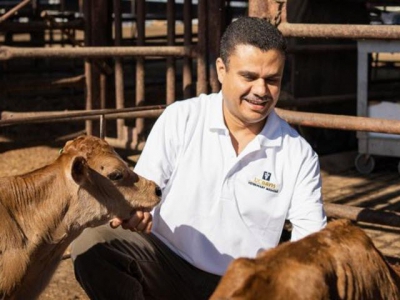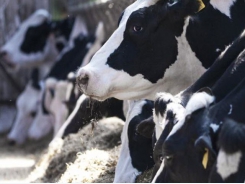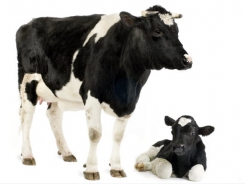New app estimates BRD prevalence of herd

App designed to be used in conjunction with recently developed BRD risk assessment tool.
Dr. Sharif Aly with dairy calves. Photo by University of California School of Veterinary Medicine
Bovine respiratory disease (BRD) is one of the most significant illnesses affecting the health of preweaned calves.
The University of California-Davis School of Veterinary Medicine, department of animal science and Division of Agriculture & Natural Resources (UCANR) have developed a new diagnostic tool — a phone app — that leads dairy producers through a scoring system for BRD.
Producers can view and select photos of clinical signs -- normal or abnormal -- in the app. Then, the app tallies the scores and creates a report that can also be shared with the herd veterinarian, the university said.
“The strength of this app is not in the simple scoring of one calf,” said Dr. Sharif Aly, professor of epidemiology and biostatistics with the school’s Veterinary Medicine Teaching & Research Center in Tulare, Cal. “Using a random survey sample, the app can estimate a calf herd’s BRD prevalence. Given inputs such as the number of calves and the desired accuracy of the prevalence estimate, the app guides the producer through the appropriate sample of calves to score. We have a lot of large herds in California, and it would take hours to walk through and score them all.”
The free app is available for Android and Apple users. It is also available in Spanish and Arabic, with more languages coming soon.
Aly explained that the app is designed to be used in conjunction with a recently developed risk assessment tool that investigates the factors known to be associated with BRD in calves. Similar to the stroke risk score for humans, the tool is herd specific and can help producers know their calves’ risk and the management changes needed to control BRD on their farm, he said.
The patent-pending risk assessment is the culmination of six years of work and two key research studies published in the Journal of Dairy Science that evaluated risk factors for BRD and regional management practices in California dairies. One of the studies scored 4,000 preweaned calves across 104 dairies throughout the state. Another study scored 12,000 calves from birth to weaning on six dairies. The studies were supported by UCANR and U.S. Department of Agriculture grants distributed through the school’s Center for Food Animal Health, for a total of $640,000.
“We sought from the beginning to find out how management practices impact calf health and designed studies to give us the magnitude of association of these factors and occurrence of BRD,” said Aly, who served as the principal investigator for the collaborative studies involving researchers and extension specialists with the School of Veterinary Medicine, UCANR, the University of California-Davis department of animal science and the California Department of Food & Agriculture.
The risk assessment tool will soon be available online, and Aly said the team hopes to incorporate it into the BRD app. Once the risk assessment is completed, producers can then use the app to benchmark their herd’s BRD prevalence. After implementing the recommended management changes, owners can obtain a second prevalence estimate to compare their progress in BRD control, Aly said.
“Used together, they can be an effective approach to lower BRD prevalence and improve the health of preweaned calves on California dairies,” Aly said.
Related news
Tools

Phối trộn thức ăn chăn nuôi

Pha dung dịch thủy canh

Định mức cho tôm ăn

Phối trộn phân bón NPK

Xác định tỷ lệ tôm sống

Chuyển đổi đơn vị phân bón

Xác định công suất sục khí

Chuyển đổi đơn vị tôm

Tính diện tích nhà kính

Tính thể tích ao



 Organic selenium may support cows through heat stress…
Organic selenium may support cows through heat stress…  Making dairy cow stall beds more comfortable
Making dairy cow stall beds more comfortable